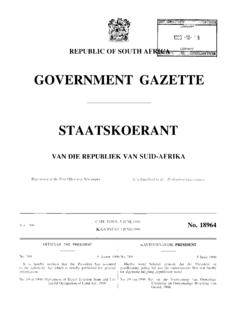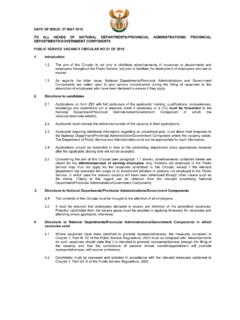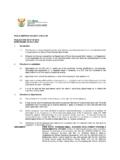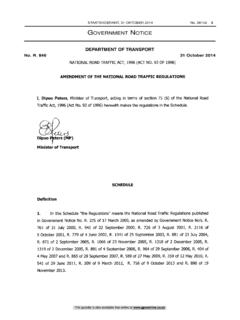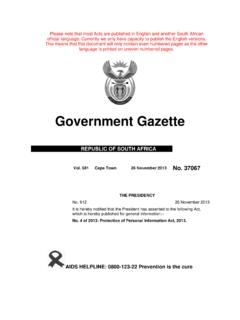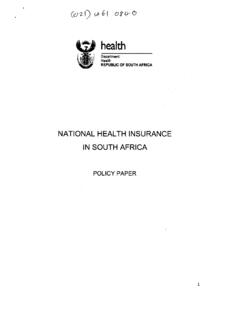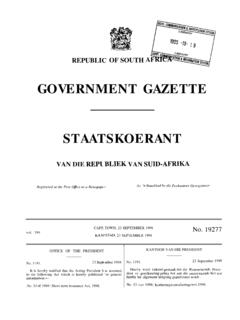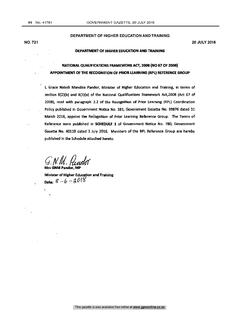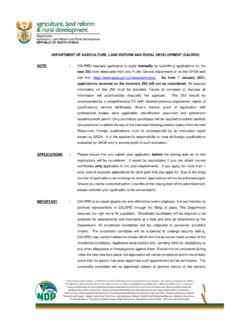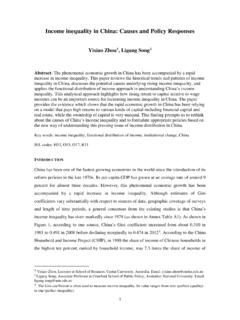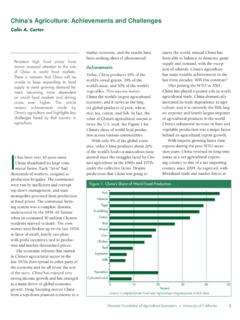Transcription of LAND AUDIT REPORT - Gov
1 land AUDIT REPORTPHASE II: PRIVATE land OWNERSHIP BY RACE, GENDER AND NATIONALITYNOVEMBER 2017 Version 2iiLAND AUDIT REPORTS outh Africa belongs to all who live in it, united in our of the Republic of South Africa Act, 199601 land AUDIT REPORTTABLE OF CONTENTS1. EXECUTIVE SUMMARY 022. INTRODUCTION 023. PURPOSE OF THE REPORT 034. PROBLEM DESCRIPTION 035. DATA 036. METHODOLOGY 037. SCOPE AND LIMITATIONS 048. DETAILED FINDINGS 05 SECTION A: land OWNERSHIP IN SOUTH AFRICA land ownership Private land ownership 06 SECTION B: FARMS AND AGRICULTURAL HOLDINGS Farms and agricultural holdings ownership by race Farms and agricultural holdings ownership by gender Farms and agricultural holdings ownership by nationality 11 SECTION C: ERVEN OWNERSHIP Erven ownership by race Erven ownership by gender Erven ownership by nationality 14 SECTION D.
2 SECTIONAL TITLE OWNERSHIP Sectional title ownership Sectional title ownership by race Sectional title ownership by nationality Sectional title ownership by gender 199. CONCLUSION 2010. RECOMMENDATIONS 2111. GLOSSARY 2502 land AUDIT REPORT1. EXECUTIVE SUMMARY The land AUDIT reveals the relationship of South Africans to one another through the management of land as a resource for sustainable development and shows that 114 223 276 ha or 94% of 121 924 881 ha land in the country is registered in the Deeds Office.
3 The outstanding 7 701 605 ha or 6% is unregistered trust state land in the Eastern Cape and Limpopo at 5 545 156 The department has embarked on a process to survey, register and vest that state trust land to individual and community owners via, among others, applicable legislative land AUDIT also shows that individuals, companies, and trusts own 89 523 044 ha or 90% of the 114 223 276 ha land . Individuals own 37 800 986 ha or 39% of this total land ; followed by trusts at 29 291 857 ha or 31%; companies at 23 199 904 or 25%; CBOs at 3 549 489 ha or 4%; and co-ownership at 883 589 ha or 1%.
4 The same individuals own most of these companies, trusts and and agricultural holdings - with 469 258 or 6% of total land parcels and 111 025 515 ha or 97% of the total land - are owned by 588 045 or 7% of total landowners. Erven in urban areas, which number 6 839 985 or 94% of total land parcels, with only have 3 197 760 ha or 3% of the total land are owned by 8 469 845 or 93% of the total owners of land , with an average of ha per owner. With 65% or 56 million of the total population found in these tiny land parcels, they command higher locational rent and prices than any in the R8 trillion national property land AUDIT reveals that Whites own 26 663 144 ha or 72% of the total 37 031 283 ha farms and agricultural holdings by individual landowners; followed by Coloured at 5 371 383 ha or 15%, Indians at 2 031 790 ha or 5%, Africans at 1 314 873 ha or 4%, other at 1 271 562 ha or 3%, and co-owners at 425 537 ha or 1%.
5 Individual males own 26 202 689 ha or 72% of the total farms and agricultural holdings owned by individual owners; followed by females at 4 871 013 or 13%. Male-female own 3 970 315 ha or 11%, co-owners 655 242 ha or 2%, and other 1 379 029 ha or 3%.Finally, South African individuals own 33 996 255 ha or 92% of the total farms and agricultural holdings; followed by foreign individuals at 769 284 ha or 2%; co-ownership at 933 728 ha or 2%; and other at 1 379 023 ha or 4%.2. INTRODUCTIONThe Department of rural development and land reform published in 2013 the first land AUDIT on State-Owned land .
6 That land AUDIT revealed, among its findings, that most of this state land was unsurveyed and unregistered trust land which is occupied by individuals and communities in the former homelands. The department has embarked on a process to survey, register and vest that trust land to individual and community owners through the Communal land Tenure the meantime, Cabinet instructed the department to conduct a second land AUDIT with particular focus on private ownership and use of land by race, nationality and gender. Work commenced to this end in 2014 under the leadership 1.
7 See Maps 1 and See Annexure South African Property Owners Association and South African Institute of Black Property Practitioners, AUDIT REPORTof the Offices of the Chief Surveyor-General and the Chief Registrar of Deeds in partnership with other Government departments and State-Owned Entities. 3. PURPOSE OF THE REPORTThe purpose of this land AUDIT is to provide information on private land ownership by race, nationality, and gender as of 2015. 4. PROBLEM DESCRIPTIONS ince the dawn of democracy in South Africa no official information has been published on land ownership according race, gender and nationality.
8 There is need to show who owns South African land and to track progress of land reform to fulfil section 25(5) of the Constitution objectives to enable South African citizens access to land on equitable racial and gender basis. 5. DATA The primary source of information in this REPORT was obtained from the: a) Office of the Chief Registrar of Deeds for land ownership information; b) Office of the Chief Surveyor-General for cadastral information; c) Department of Home Affairs for population register that contains nationality of origin and gender of South African citizens; and d) Statistics South Africa for census data that contain the race of pertaining to land ownership are available electronically in the Deeds Registration System (DRS).
9 These records contain only the name, surname and South African identity number or date of birth but not DHA maintains the electronic population register which contains, amongst others, names, surnames, South African identity numbers, nationality and gender - but not the race of South African citizens. Stats SA is the only institution that officially collects and keeps a database that has the race of METHODOLOGYThe process involved data preparation, owner classification, exporting individual s data, processing by the DHA and Stats SA, importing of results and 1 High level processData preparationProcessing by DHA and Stats SAOwner ClassificationImport DHA and Stats SA Result/outputExport Individual s dataAnalysis04 land AUDIT REPORTThe data preparation process involved database design.
10 And importing of land ownership data from text files into the database. Classification of land owners was the first step. Classification of owners was done in two levels. The initial classification distinguished between private and state owners. Three classification categories were used, namely: state, private and other. Private landowners were classified into five sub-categories of individuals, companies, community-based organisations (CBOs), and trusts. CBOs include Community Property Associations (CPAs), Churches, Home Owners Associations (HOAs) and others.
